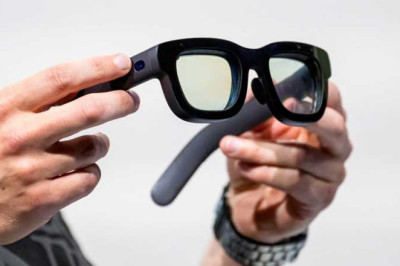
3,147
views
views
China announced 10 new measures for dealing with Covid-19 on Wednesday, accelerating its shift away from the zero-tolerance stance that has kept the country isolated from the rest of the world and devastated the economy over the last three years.
These Are the 10 New Covid Rules China Will Follow on Path to Reopening
China announced 10 new measures for dealing with Covid-19 on Wednesday, accelerating its shift away from the zero-tolerance stance that has kept the country isolated from the rest of the world and devastated the economy over the last three years.
The new direction comes less than two weeks after protests swept across the country in a rare show of defiance at the government’s handling of the virus, and as case numbers climbed steadily despite best efforts at containment. It’s the second time the government has unveiled guidelines for officials to follow after 20 policy measures were published in November, highlighting just how rapidly the change in strategy is taking place.
These are the 10 new measures:
- Be precise in categorizing high-risk areas, limiting them to residential units or blocks and refraining from extending them at will to an entire housing compound, neighborhood or street.
- Reduce mass testing frequency and further minimize its scale. Negative tests or a green health code on contact-tracing smartphone apps will no longer be required to access most public areas, excluding hospitals, senior homes, kindergartens. On-arrival testing and checking of health codes will end for domestic travel.
- Asymptomatic and mild Covid cases (who satisfy quarantine conditions) can stay at home or voluntarily go to a centralized quarantine facility for seven days. Close contacts can quarantine at home for five days.
- Lockdowns in high-risk areas will be lifted if there are no new cases for five consecutive days.
- Ensure the availability of medicine for the public. Pharmacies cannot close at will, and no purchase limits for medicine will be allowed.
- Accelerate vaccination for the elderly. Establish green lanes and mobile vaccination spots, improve publicity, and consider incentives to promote vaccine usage.
- Enhance the monitoring of population still at risk for Covid.
- Ensure the normal operations for key societal services. Low-risk areas are not allowed to control movement or suspend any services, work, or production. Public workers must promptly address the population's basic living needs.
- Forbid the blockage of emergency exits or apartment entrances. Escape routes must stay open in the event of medical emergencies or hazards.
- Improve pandemic control measures on school campuses. Schools without Covid cases must carry out offline learning and keep shared spaces open (e.g. cafeterias, libraries, stadiums). Schools with Covid cases must be precise in categorizing high-risk areas and ensure that low-risk areas continue as per normal.





















Comments
0 comment